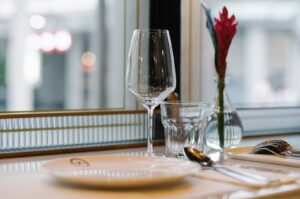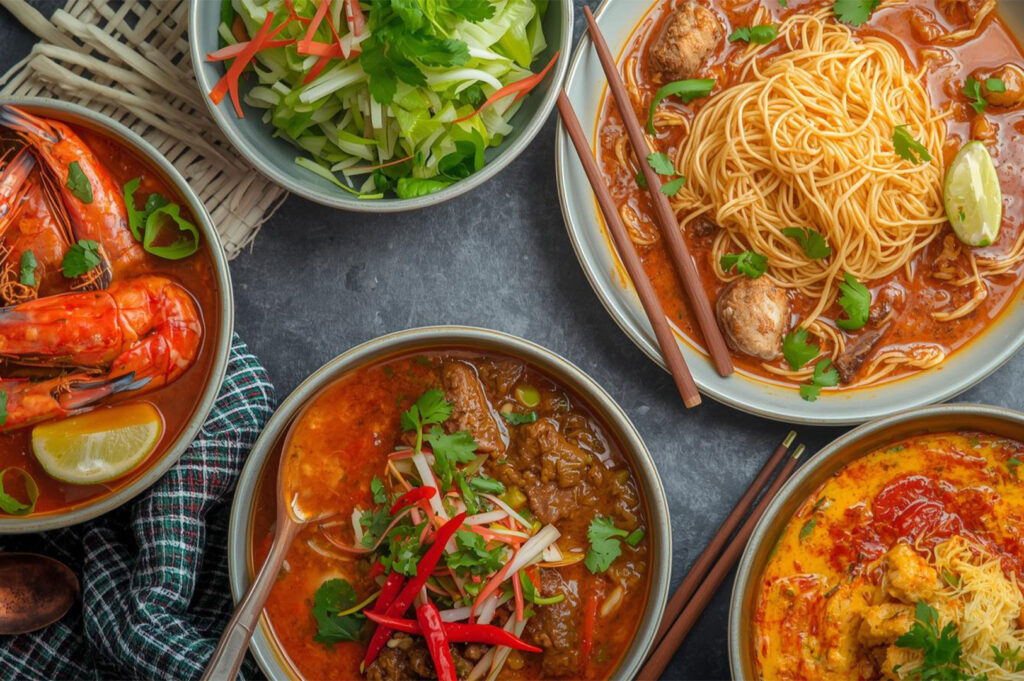
The diversity of Thai cuisine has found its place front and center in Singapore’s vibrant dining scene, where everything from spicy street-side plates to elegant Bangkok-inspired fine dining awaits. Today, Thai regional cuisine Singapore boasts an impressive range—from Isaan-style hot basil chicken or grilled pork neck at a Michelin Bib Gourmand restaurant to claypot tang hoon packed with jumbo cockles at a city hawker. Fried rice bursting with crab meat or prawn, deep fried century egg with luscious yolk, and boat noodles simmered in fragrant broth are just a few iconic Thai dishes commonly found across the best Thai restaurants Singapore has to offer.
Understanding authentic Thai cuisine and its regional nuances isn’t just for purists—it’s essential for anyone craving a full sensory adventure. Different regions present their own signature dishes, cooking methods, and premium ingredients, making every meal in Singapore feel like a tour of Thailand itself.
Let this expert guide walk you through Singapore’s best Thai dishes, revealing the subtle (and bold!) characteristics of each region and showing you where to find the most authentic and flavourful examples of Thai regional cuisine Singapore — from a Michelin Bib Gourmand spot serving grilled pork neck to a hawker stall with deep fried century egg and claypot tang hoon. Get ready for a journey that awakens the taste buds and elevates your appreciation for every grain of khao hom (Thai jasmine rice), fragrant herb, succulent seafood, and drop of coconut milk.
Thai Regional Cuisine: Understanding Thai Cuisine by Region

Thailand’s food culture is colored by geography. The country’s four culinary regions—Central, Northern, North Eastern Thailand (Isaan), and Southern—each contribute a kaleidoscope of dishes, profiles, and ingredients to Singapore’s thriving restaurant scene.
- Central Thai Cuisine: The “heart” of Thai food, this region offers a balance of sweet, salty, spicy, and sour. Look for famed signatures like Pad Thai (made with generous portions of crab meat or prawns), tom yum seafood, and steamed seabass with spicy lime dressing. You’ll find extensive menus at premium restaurants or casual eateries, each with their version of these classics.
- Northern Thailand Cuisine: Known for aromatic herbs, grilled chicken and pork, sticky rice, and less coconut milk than the south. Dishes like khao soi (coconut curry noodles), sai oua (grilled pork sausage), and nam prik ong (pork and tomato chili dip) hit all the earthy notes that meat lovers crave, pairing perfectly with fresh vegetables.
- Isaan (North Eastern Thailand): This region delights with spice, tang, and plenty of ferments. Signature dishes include som tum (spicy papaya salad often with century egg), moo ping (grilled pork skewers), larb (minced meat salad with fresh coriander and lime), and gai yang (succulent grilled chicken). Street food options in Singapore’s Thai scene often feature these robust flavours.
- Southern Thai Cuisine: Renowned for fiery curries, loads of coconut milk, eggplant, and an array of seafood—think squid, prawns, and fish. Notable dishes include massaman curry (often cooked with beef or lamb), gaeng som (spicy fish soup with sea bass or tilapia), and deep fried soft shell crab.
Note: City Gate commercial areas and hawker centers in Singapore offer little-known gems with authentic regional Thai cuisine—be on the lookout for new faces bringing the taste of Thailand to town.
Central Thai Cuisine: Where Premium Ingredients Meet Iconic Flavour

Central Thai cuisine remains the gateway to authentic Thai cuisine for many in Singapore. The balanced sweet, spicy, and tangy notes of signature dishes like tom yum seafood, pad Thai, and deep fried sea bass are the heart of this region’s menu.
Where to Enjoy Central Thai Dishes in Singapore
- Sabai Fine Thai on the Bay (Customs House): A standout for premium ingredients and authentic preparation. Try their steamed seabass or claypot tang hoon—each dish layered with sweet and tangy flavour, loaded with fresh herbs, and served in generous portion sizes.
- Bangkok Jam (Various Locations): Best known for their extensive menu featuring favourites like tom yum seafood soup, pad Thai, and fried rice with crab meat. The broth in their tom yum delights any seafood fan.
- First Thai Restaurant (Bugis): Famed for robust pad Thai and tangy tom yum with seafood—both signature dishes and crowd-pleasers.
Insider Tip: Authentic tom yum should taste savoury, spicy, and slightly tangy, with a broth that’s not too clear (thanks to juicy prawn heads). Look for versions that use fresh lime, coriander, mushrooms, and lemongrass rather than just chili paste and water.
Northern Thai Cuisine: Herb-Forward Dishes for Adventurous Taste Buds
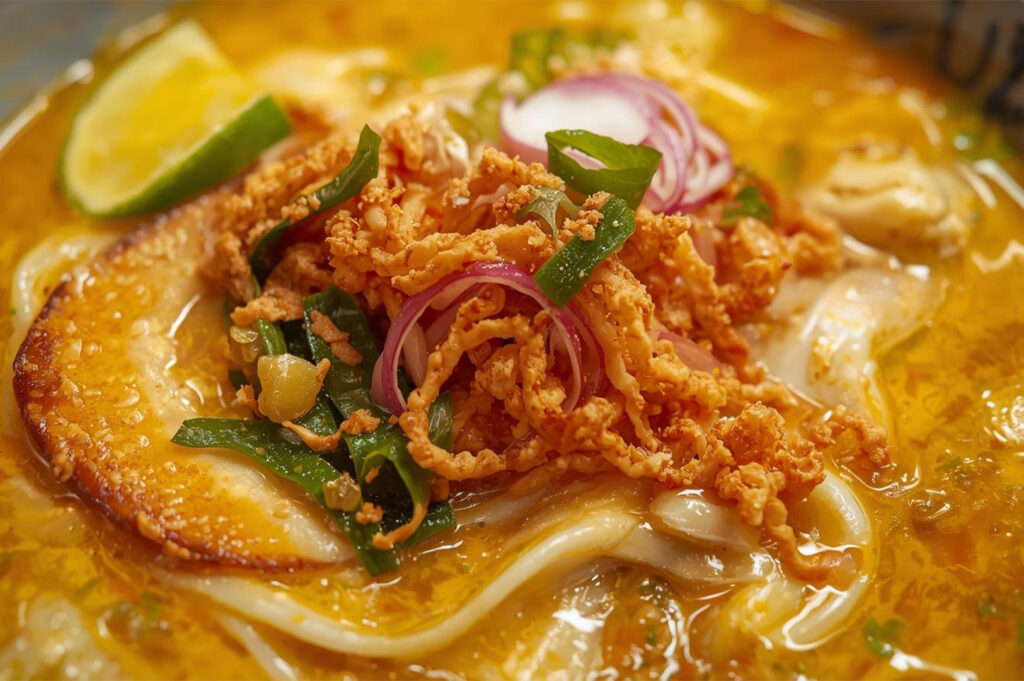
Northern Thai cuisine stands apart from the coconut milk-rich curries of the south. Khao soi—coconut curry noodles topped with crispy noodles and herbs—delivers fragrant, mildly spicy enjoyment. Sai oua (grilled pork sausage) and grilled pork neck are must-orders for meat lovers, with dipping sauces brimming with white peppercorns, coriander, and lime.
Other favourites include nam prik ong (deeply savoury pork and tomato relish), eggplant salads, and sticky rice served with each meal.
Top Northern Thai Restaurants in Singapore
- Un-Yang-Kor-Dai (South Bridge Road): An authority on Thai regional cuisine Singapore, especially for their khao soi, juicy grilled pork neck, and claypot tang hoon with crab meat—earning Michelin Bib Gourmand recognition.
- Nakhon Kitchen (Multiple Locations): Try their sai oua (grilled pork sausage) or khao soi for an authentic experience using premium ingredients and generous portion sizes.
Insider Tip: Seek out places with house-made nam prik (chili dips) and fresh herbs—these dishes often show up as chef’s specials.
Isaan Cuisine Singapore: Spicy, Tangy, and Downright Irresistible
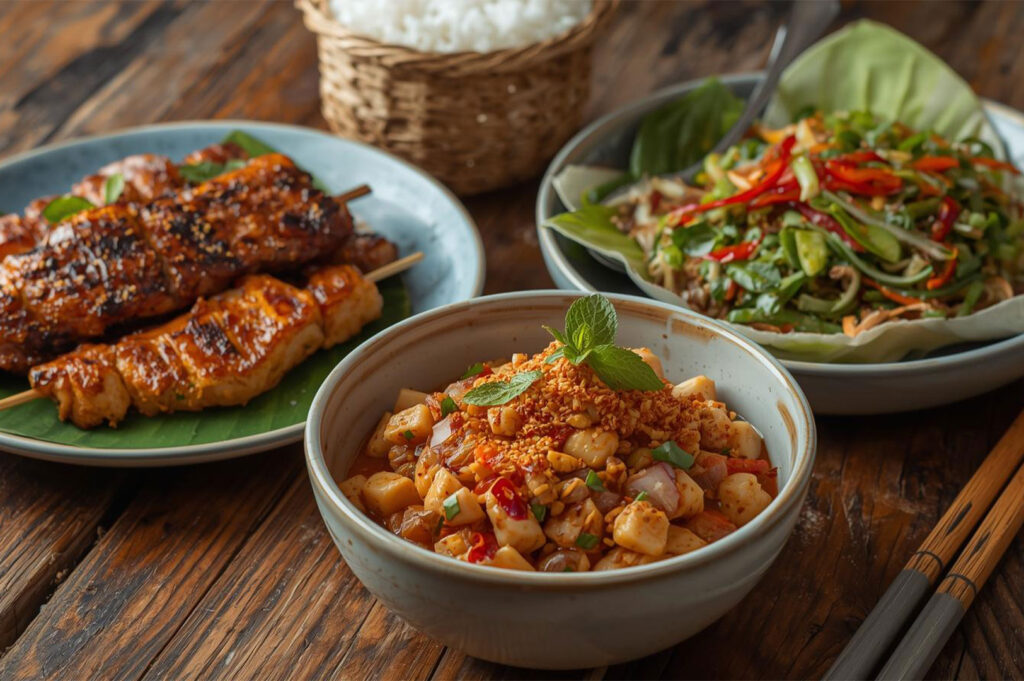
Isaan cuisine, from North Eastern Thailand, is celebrated in Singapore for its vibrant, tangy, and spicy dishes. Begin with som tum (papaya salad, often elevated with century egg or jumbo cockles and plenty of lime). Pair with larb—meat salad with lime, mint, and roasted rice powder. Don’t skip the legendary moo ping—grilled pork neck, sweet, smoky, and utterly addictive.
Dozens of hawkers and restaurants in Singapore offer Isaan’s signature cuisine—served with fragrant sticky rice for a true Thai meal.
Best Places for Isaan Cuisine Singapore
- Un-Yang-Kor-Dai (South Bridge Road): Their som tum (choose extra spicy for maximum flavour), jumbo cockles, moo ping, and grilled chicken (gai yang) with lime leaf deliver an authentic Isaan hit.
- Beerthai House Restaurant (Golden Mile Complex): Famed for their larb, som tum, grilled pork neck, and claypot tang hoon with seafood.
- Soi 47 Thai Food (Toa Payoh): Great for affordable plates of larb, som tum, deep fried snacks, and signature Isaan-style grilled chicken.
Insider Tip: True Isaan food should feature fresh herbs, toasty rice powder, marinated meat, and freshly squeezed lime. If your som tum is pounded in a mortar and pestle, you’re in the right spot.
Southern Thai Cuisine Singapore: Fiery, Seafood-Rich, and Indulgent
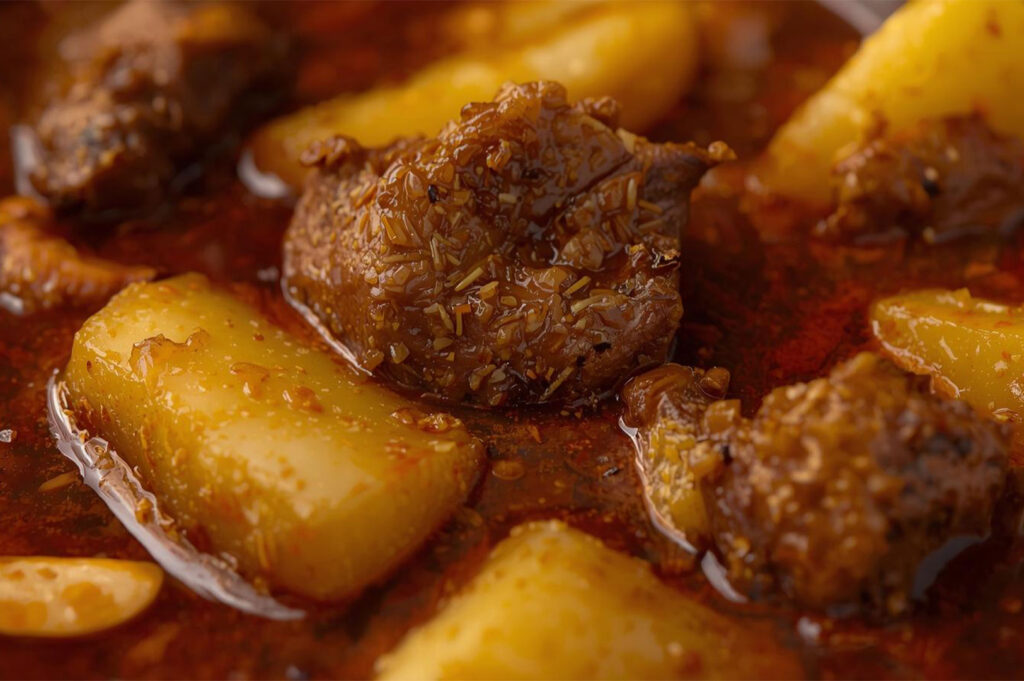
Southern Thai cuisine brings rich coconut milk, fiery chilies, seafood (crab, squid, fish), and signature curries to Singapore. Must-try dishes include massaman curry with beef or lamb—an aromatic broth laced with spices and coconut milk—plus gaeng som, a sour and spicy fish soup, and deep fried seafood platters. Steamed sotong, sea bass, and fried rice with crab meat regularly steal the show on southern menus.
Where to Try Southern Thai Dishes in Singapore
- Southern Thai (Our Tampines Hub): Go for their gaeng som with sea bass; the broth is spicy, sour, loaded with generous fish portions and fresh coriander.
- Sanook Kitchen (Islandwide): Try the massaman curry (beef, chicken, or lamb), southern fried seafood, and claypot tang hoon with crab meat.
- Kra Pow Thai Restaurant (Chinatown): Don’t miss their fried rice with grilled squid, southern omelettes, and seafood salads with a tangy modern twist.
Insider Tip: Look for dishes made with premium ingredients—like wild-caught tilapia or marinated prawns. Southern-style curries usually include coconut milk, spicy chilies, fresh eggplant, lime, and chopped coriander for authentic heat and flavour.
Pad Thai, Tom Yum, Boat Noodles: Classics that Showcase Thai Dishes
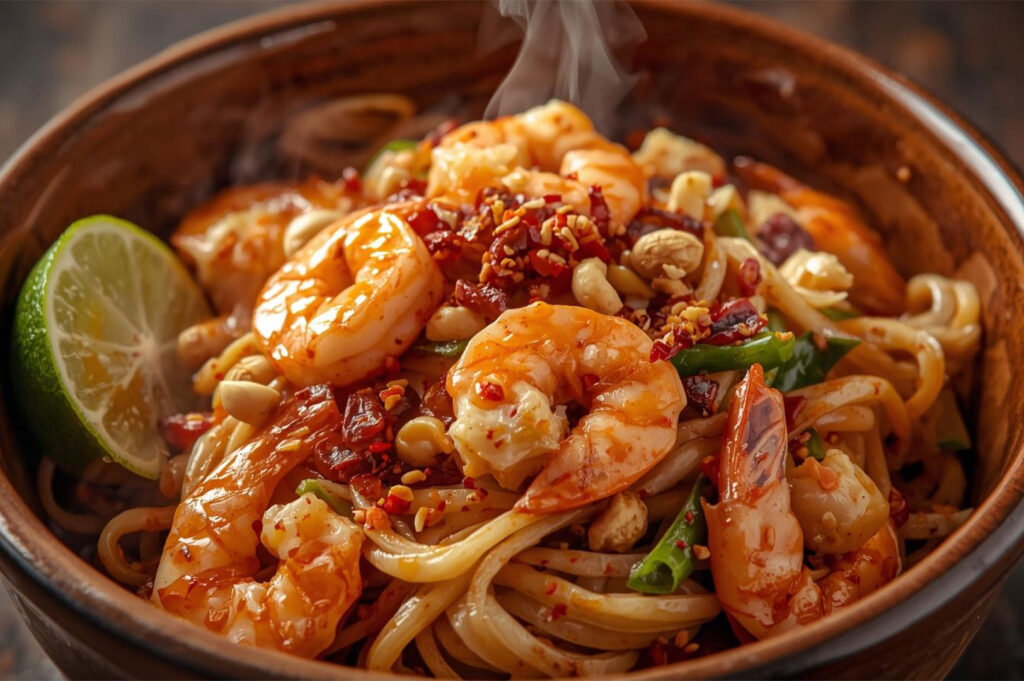
No Thai regional cuisine Singapore guide would be complete without these stalwarts. Pad Thai—sweet, savoury, tangy, loaded with peanuts, prawn, sometimes crab meat—is perfect for noodle aficionados. Tom yum, especially tom yum seafood, is an essential meal for anyone craving a spicy, tangy soup packed with prawns, mushrooms, squid, and fresh lime. Deep fried century egg, fried rice with crab or prawn, boat noodles (with beef or pork in robust, herbaceous broth), and claypot tang hoon (glass noodles with seafood) all deliver authentic experiences at both hawker stalls and upmarket restaurants.
Note: Modern chefs in Singapore sometimes add a modern twist, such as tom yum with crab meat, deep fried oysters, or claypot tang hoon with a mix of seafood, for a unique spin on Thai classics.
Khao Hom, Un-Yang-Kor-Dai & The Rise of Premium Ingredients in Thai Cuisine
Some of the best Thai restaurants Singapore embrace the use of khao hom (Thai jasmine rice) and premium, fresh ingredients to create authentic and flavourful meals. Un-Yang-Kor-Dai is celebrated for both its Isaan and Northern Thai cuisine, their khao hom rice aromatic, the grilled pork neck juicy and marinated overnight, the claypot tang hoon featuring generous portions of crab meat. It’s a signature destination for all who crave regional diversity and top-notch ingredients.
Insider Tip: If you notice dishes garnished with fresh coriander, juicy lime wedges, and generous seafood, you know the kitchen places emphasis on quality and authenticity.
How to Identify Authentic Thai Cuisine in Singapore
Look for a restaurant with a focused menu—one that bravely features regional specialties or claims to serve dishes from north eastern Thailand. Ask the staff about their curry pastes and broths: in a truly authentic Thai kitchen, everything is made in-house and tailored with real spices, fresh herbs, premium meats, and seafood. At hawker centers, opt for places packed with Thais—locals know where to find real Thai food.
Dining at places like City Gate, Golden Mile, and South Bridge Road gives you access to an extensive menu of regional specialties, street food, and new-school creations alike.
Thai Festivals, Street Food, and the Modern Twist

Events like Songkran (Thai New Year) light up Singapore with special Thai food promotions—think street food snacks like moo ping (grilled pork skewers), hot basil chicken, spicy seafood, and desserts made from coconut milk, egg, and fragrant pandan. Some restaurants offer signature desserts with modern twists, like coconut ice cream with taro and egg or claypot tang hoon with seafood and century egg for a fusion appeal.
Thai street food Singapore is always evolving—look out for new hawkers experimenting, and restaurants bringing deep fried century egg, steamed sotong, oyster pancakes, or crab meat fried rice to greater prominence.
Conclusion: Explore the Full Depth of Thai Regional Cuisine Singapore
Exploring Thai cuisine in Singapore means discovering something new with every meal. From Central Thai cuisine’s balanced classics—pad Thai, tom yum, steamed seabass—to Northern Thailand’s sticky rice, grilled pork neck, and earthy relishes; from Isaan’s beloved som tum, larb, and moo ping, to the coconut milk-laden, seafood-rich curries of the South—there’s more to Thai food than meets the eye or taste buds.
Step outside your comfort zone. Seek out that grilled chicken in South Bridge Road, that tangy claypot tang hoon, sweet and savoury boat noodles, or a daring bowl of tom yum seafood packed with prawns, squid, and fish. Whether you’re a noodle, rice, soup, or meat devotee, Thai regional cuisine Singapore offers an authentic, flavourful, and ever-evolving cuisine that’s as exciting as it is delicious.
Craving the real deal? Dive in and see how Singapore’s Thai scene is redefining authentic Thai cuisine—your next favourite dish, craving, or flavourful meal awaits. For more culinary inspiration, explore the latest Korean food trends in Singapore or discover the timeless heritage of Peranakan cuisine that continues to shape the nation’s dining identity.


